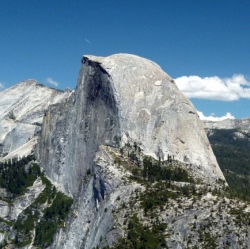
Scientists think they have found a smart way to constrain carbon emissions; turn them to stone. Researchers report an experiment in Iceland where they have pumped CO2 and water underground into volcanic rock. Reactions with the minerals in the deep basalts convert the carbon dioxide to immobile chalky solid.
Even more encouraging, the team writes in Science magazine, is the speed at which this process occurs: on the order of months. "Of our 220 tonnes of injected CO2, 95% was converted to limestone in less than two years," said lead author Juerg Matter from Southampton University, UK.
"It was a huge surprise to all the scientists involved in the project, and we thought, ‘Wow! This is really fast’," he recalled on the BBC’s Science In Action programme.
With carbon dioxide concentrations in the atmosphere marching ever upwards and warming the planet, researchers are keen to investigate so called "carbon capture and storage" (CCS) solutions.
The Carbfix project on Iceland, on the other hand, seeks to solidify the unwanted carbon in place. Working with the Hellisheidi geothermal power plant outside Reykjavik, it combined the waste CO2 with water to make a slightly acidic liquid that was then sent hundreds of metres down into the volcanic basalts that make up so much of the North Atlantic island.
The low pH water (3.2) worked to dissolve the calcium and magnesium ions in the basalts, which then reacted with the carbon dioxide to make calcium and magnesium carbonates. Cores drilled into the experimental site pulled up rock with the tell-tale white carbonates occupying the pore spaces.
The Hellisheidi geothermal power station has now moved beyond the experiment reported in Science magazine and is routinely injecting CO2 into the subsurface in larger quantities. The company is also burying hydrogen sulphide – another byproduct from the plant. This benefits the locals who have had to suffer the occasional waft of rotten eggs coming over their properties.
